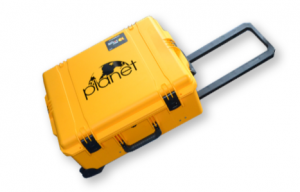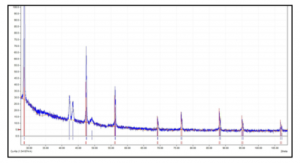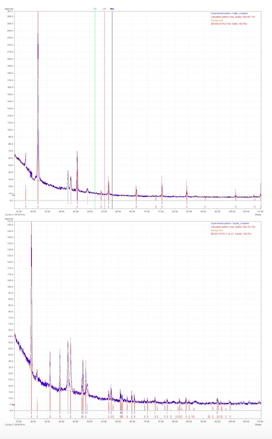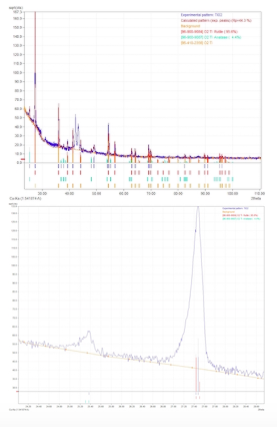- Overview
- Features
- Technical Details
- Application
- Download

PLANET
On-site XRD analysis for Geology and Mineralogy
One of the most important applications of X-ray diffraction is the identification of the phases in soil samples taken during an exploration. Among others the results of these analyses help you decide whether it is worthwhile to return to the site for further investigation.
What if these analyses could be done already in the field?
- Save significantly on lead time and cost
- Allow for pre-selection of sample. Only the most interesting ones need to be sent to a laboratory.
- Immediately yield the results where and when you need them
Therefore, we offered the PLANET!
- A portable diffractometer designed to meet all the specifications needed for complex phase identifications
- Works on a set of Li-ion batteries with constant performance of minimum 4 hours 20Ah at 24 V)
- 30W X-ray tube with Cu-anode. Co on request
- Ultra-sensitive linear detector covering 7° in 2Theta
- Compact design based on the Seemann-Bohlin focusing geometry

Compact but powerful
With the PLANET we introduce a portable powder diffractometer with sufficient attainable resolution to identify even the most complex mixtures of minerals.
- Compact design and battery operated
- 30W X-ray tube with Cu-anode
- Ultra-sensitive linear detector covering 7° in 2Ɵ

ANGULAR RANGE
The PLANET covers an extraordinary angular range in both incident- and scattering angles, which is unsurpassed by any portable X-ray diffractometer:
-
Angle of incidence range: 6.7° to 45°
-
Scattering angle: 7° to 120° 2Ɵ

ACCURACY OF PEAK POSITIONS
The PLANET’s accuracy guarantees the resulting scattering angles deviate less than 0.015° from the true value. This is probably the most important parameter for successful phase identifications of complex mixtures.

A HI-RES SOLUTION IN A SUITCASE
The peaks are measured on LaB6 , a well accepted standard to quantify the attainable resolution of a powder diffractometer. Profile fitting of these two peaks shows an FWHM of 0.10° in 2Ɵ.

BACKGROUND LEVEL
With its unique optical system the background levels are reduced significantly compared to existing Seemann- Bohlin based diffractometers.
This helps to determine shallow peaks and improves the detection limits in the field.
Technical Specifications
|
Angle of incidence range (omega) |
6.7° to 44° |
|
Scattering Angle range (2Theta) |
7° to 120° |
|
Attainable resolution (2Theta) (FWHM of LaB6 211reflection) |
0.10° |
|
Peak-to=Background ratio (Si311) |
25 |
|
Linearity |
±0.03° |
|
Battery lifetime |
4 hours uninterrupted operation |
|
Enclosure |
Pb lined Peli Storm C |

Validation Test: Differentiate the Kitchen salt and Calcite:
To validate the Planet in-field X-ray diffractometer, we took two samples readily at hand to identify the phases therein. Kitchen salt and Calcite. We measured these samples from 23 - 110o 2Theta. We analyzed both X-ray diffraction patterns with the Match! software from Crystal Impact. In both samples the correct phases were identified without the need to apply any restrictions. We just loaded th pattern and the software automatically came up with the correct result.


